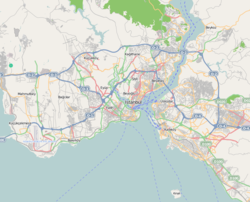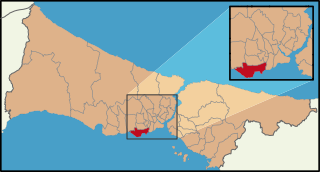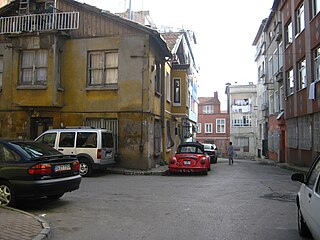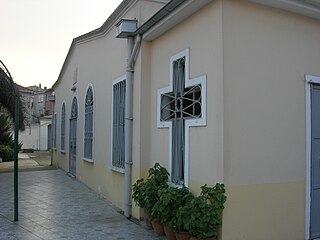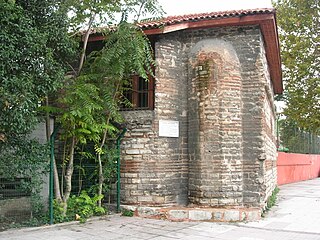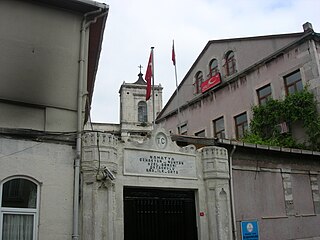| Ayakapı | |
|---|---|
| Quarter | |
| Coordinates: 41°01′36.00″N28°57′23.40″E / 41.0266667°N 28.9565000°E Coordinates: 41°01′36.00″N28°57′23.40″E / 41.0266667°N 28.9565000°E | |
| Country | |
| Region | Marmara |
| Province | Istanbul |
| District | Fatih |
| Time zone | EET (UTC+2) |
| • Summer (DST) | EEST (UTC+3) |
| Area code | 0-212 |
Ayakapı (Turkish : "The Gate of the Saint", "The holy gate") [1] (the toponym comes from the Turkish word Aya, derived from pronunciation of the Greek word ἁγἰα, mean. "female Saint" and the Turkish word kapı, mean. "gate") [2] is a quarter of Istanbul, Turkey. It is part of the district of Fatih, inside the walled city, and lies on the shore of the Golden Horn. During the Byzantine era, it was named ta Dexiokratiana or ta Dexiokratous in Greek, after the houses owned here by a certain Dexiokrates. Its modern name comes from a church dedicated to Saint Theodosia which, according to Petrus Gillius, stood near the gate. In Ayakapı lies one of the most important surviving Byzantine buildings of the historical peninsula, the Gül Mosque.
Moreover, in 1582 the Ottoman architect Sinan built here a Turkish bath, the Ayakapı Hamamı. This structure is currently used as a storage for timber.

Turkish, also referred to as Istanbul Turkish, is the most widely spoken of the Turkic languages, with around ten to fifteen million native speakers in Southeast Europe and sixty to sixty-five million native speakers in Western Asia. Outside Turkey, significant smaller groups of speakers exist in Germany, Bulgaria, North Macedonia, Northern Cyprus, Greece, the Caucasus, and other parts of Europe and Central Asia. Cyprus has requested that the European Union add Turkish as an official language, even though Turkey is not a member state.

Istanbul, formerly known as Byzantium and Constantinople, is the most populous city in Turkey and the country's economic, cultural and historic center. Istanbul is a transcontinental city in Eurasia, straddling the Bosporus strait between the Sea of Marmara and the Black Sea. Its commercial and historical center lies on the European side and about a third of its population lives in suburbs on the Asian side of the Bosporus. With a total population of around 15 million residents in its metropolitan area, Istanbul is one of the world's most populous cities, ranking as the world's fourth largest city proper and the largest European city. The city is the administrative center of the Istanbul Metropolitan Municipality. Istanbul is viewed as a bridge between the East and West.

Turkey, officially the Republic of Turkey, is a transcontinental country located mainly in Western Asia, with a smaller portion on the Balkan Peninsula in Southeast Europe. East Thrace, located in Europe, is separated from Anatolia by the Sea of Marmara, the Bosphorous strait and the Dardanelles. Turkey is bordered by Greece and Bulgaria to its northwest; Georgia to its northeast; Armenia, the Azerbaijani exclave of Nakhchivan and Iran to the east; and Iraq and Syria to the south. Ankara is its capital but Istanbul is the country's largest city. Approximately 70 to 80 per cent of the country's citizens identify as Turkish. Kurds are the largest minority; the size of the Kurdish population is a subject of dispute with estimates placing the figure at anywhere from 12 to 25 per cent of the population.

